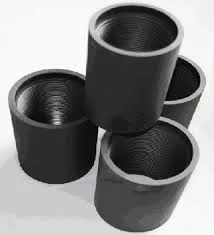- Afrikaans
- Albanian
- Amharic
- Arabic
- Armenian
- Azerbaijani
- Basque
- Belarusian
- Bengali
- Bosnian
- Bulgarian
- Catalan
- Cebuano
- Corsican
- Croatian
- Czech
- Danish
- Dutch
- English
- Esperanto
- Estonian
- Finnish
- French
- Frisian
- Galician
- Georgian
- German
- Greek
- Gujarati
- Haitian Creole
- hausa
- hawaiian
- Hebrew
- Hindi
- Miao
- Hungarian
- Icelandic
- igbo
- Indonesian
- irish
- Italian
- Japanese
- Javanese
- Kannada
- kazakh
- Khmer
- Rwandese
- Korean
- Kurdish
- Kyrgyz
- Lao
- Latin
- Latvian
- Lithuanian
- Luxembourgish
- Macedonian
- Malgashi
- Malay
- Malayalam
- Maltese
- Maori
- Marathi
- Mongolian
- Myanmar
- Nepali
- Norwegian
- Norwegian
- Occitan
- Pashto
- Persian
- Polish
- Portuguese
- Punjabi
- Romanian
- Russian
- Samoan
- Scottish Gaelic
- Serbian
- Sesotho
- Shona
- Sindhi
- Sinhala
- Slovak
- Slovenian
- Somali
- Spanish
- Sundanese
- Swahili
- Swedish
- Tagalog
- Tajik
- Tamil
- Tatar
- Telugu
- Thai
- Turkish
- Turkmen
- Ukrainian
- Urdu
- Uighur
- Uzbek
- Vietnamese
- Welsh
- Bantu
- Yiddish
- Yoruba
- Zulu
Understanding API Tubing Couplings and Their Importance in Oil and Gas Industry
Understanding API Tubing Couplings An Essential Component for Oil and Gas Operations
In the oil and gas industry, the efficient extraction and transportation of hydrocarbons are paramount. A crucial component of this process is the tubing coupling, specifically those that conform to the American Petroleum Institute (API) standards. API tubing couplings play a vital role in ensuring the integrity and reliability of the wellbore during drilling and production operations.
What are API Tubing Couplings?
API tubing couplings are specialized fittings used to connect sections of tubing in oil and gas well drilling. These couplings are designed to meet strict API standards, which ensure compatibility, safety, and quality in harsh underground environments. The API specifications dictate the dimensions, material, and testing requirements for these couplings, providing a framework that promotes uniformity and reliability across the industry.
Key Features and Benefits
1. Strength and Durability API tubing couplings are engineered to withstand extreme conditions, such as high pressure and temperature variations that occur during drilling and production. Made from high-quality steel, these couplings provide the necessary strength to support the weight of the tubing and resist potential mechanical stresses.
2. Enhanced Sealing A well-sealed coupling minimizes the risk of leaks, which can lead to significant environmental hazards and financial losses. API tubing couplings often feature advanced sealing technologies that ensure a tight fit between tubing sections, preventing fluid escape and maintaining pressure.
api tubing couplings

3. Standardization The adherence to API standards means that manufacturers produce couplings that are interchangeable and compatible with various types of tubing. This standardization simplifies logistics and procurement for oil and gas companies, as they can source components from multiple suppliers without concerns of inconsistency.
4. Corrosion Resistance Given the corrosive nature of many fluids encountered in oil and gas operations, API tubing couplings are often treated or coated to enhance their resistance to corrosion. This feature significantly extends their lifespan and reduces the need for frequent replacements, ultimately leading to cost savings.
Applications in the Oil and Gas Industry
API tubing couplings are extensively used in both onshore and offshore drilling operations. When drilling wells, the couplings connect segments of tubing that extend deep into the Earth’s crust, facilitating the flow of oil and gas to the surface. In production stages, these couplings maintain the integrity of the wellbore, ensuring efficient and safe extraction.
Conclusion
In summary, API tubing couplings are a fundamental component of modern oil and gas operations. Their robust design, adherence to industry standards, and focus on safety and efficiency make them indispensable in drilling and production activities. As technology advances, continuous improvements in the design and materials used for these couplings are expected, further enhancing their performance and reliability. Understanding and utilizing API tubing couplings effectively can lead to more efficient operations and safer extraction processes in the challenging environments of oil and gas exploration.
-
Tubing Pup Joints: Essential Components for Oil and Gas OperationsNewsJul.10,2025
-
Pup Joints: Essential Components for Reliable Drilling OperationsNewsJul.10,2025
-
Pipe Couplings: Connecting Your World EfficientlyNewsJul.10,2025
-
Mastering Oilfield Operations with Quality Tubing and CasingNewsJul.10,2025
-
High-Quality Casing Couplings for Every NeedNewsJul.10,2025
-
Boost Your Drilling Efficiency with Premium Crossover Tools & Seating NipplesNewsJul.10,2025







